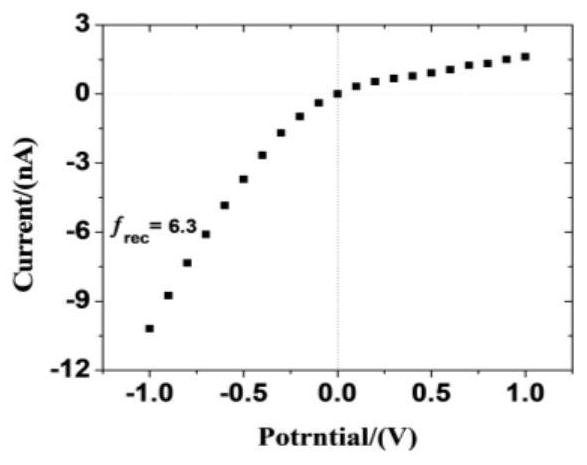Method for preparing nanofluid diode responsive to pH and temperature based on gelatin-modified solid nanopores
A nanofluid and temperature-responsive technology, which is applied in nanotechnology for sensing, thermometers and thermometers using electric/magnetic elements that are directly sensitive to heat, can solve the problem of unstable and difficult surface modification of nanopores. Insufficient densities of materials for entry and modification, etc., to achieve the effect of avoiding insufficient densities of modifications
- Summary
- Abstract
- Description
- Claims
- Application Information
AI Technical Summary
Problems solved by technology
Method used
Image
Examples
Embodiment Construction
[0025] Now in conjunction with embodiment, accompanying drawing, the present invention will be further described:
[0026] The present invention provides a new method for preparing nanofluid diodes responsive to temperature and pH based on solid-state nanopores. The preparation process and working principle are as follows:
[0027] Firstly, clean the surface of PET, etch the nanopores by chemical etching, soak the etched nanopores in 0.1% and 1% gelatin solutions for 4 hours and 6 hours respectively, take them out and rinse them with secondary water, and let them dry in the air. After drying, put them in an oven at 45° C. for 4.5 hours and 4 hours respectively to obtain gelatin-modified solid nanopores.
[0028] The molecular structure of gelatin has a large number of carboxyl and amino functional groups, and it is easy to dissolve in hot water and cool to form a gel. Therefore, the modification of gelatin on the inner surface of the solid nanopore will change the charge type,...
PUM
 Login to View More
Login to View More Abstract
Description
Claims
Application Information
 Login to View More
Login to View More - R&D
- Intellectual Property
- Life Sciences
- Materials
- Tech Scout
- Unparalleled Data Quality
- Higher Quality Content
- 60% Fewer Hallucinations
Browse by: Latest US Patents, China's latest patents, Technical Efficacy Thesaurus, Application Domain, Technology Topic, Popular Technical Reports.
© 2025 PatSnap. All rights reserved.Legal|Privacy policy|Modern Slavery Act Transparency Statement|Sitemap|About US| Contact US: help@patsnap.com



